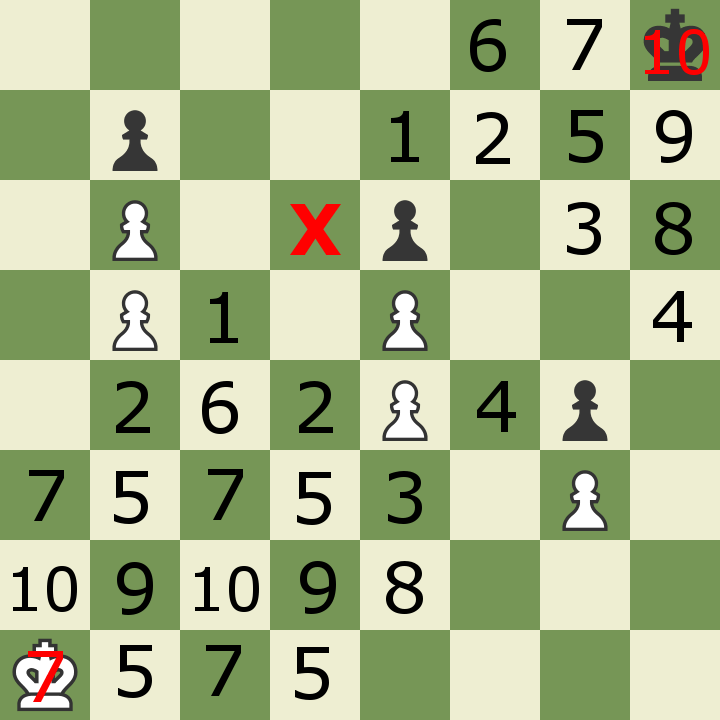If White gets to d6, then Black is lost. Therefore, if White moves to c5, Black must move to d7 or e7. However, if White moves to c5 and Black moves to d7, then play can proceed Kd4 Ke7 Ke3 Kf7 Kf4 and Black is doomed. Thus, it turns out that, if White moves to c5, Black must reply by moving to e7. If White moves to d4, Black has to be ready to move to e7 and to be ready to fend off an attack on the g4 pawn. The only possibility is to reply to Kd4 with …Kf7. If White moves to e3, Black has to be able to get to e7 in two moves and be ready to defend the g4 pawn. Hence, Black has to reply to Ke3 with Kg6. If White moves to d3, Black has to be ready to reply to Kd4 with ...Kf7 and be ready to reply to Ke3 with Kg6. Hence, Black must reply to Kd3 with Kg7. Similarly, if White moves to c4, Black has to be able to move to e7, f7, and g7. The only possibility is f8. To summarize what we have so far:
The reply to Kc5 must be ...Ke7.
The reply to Kd4 must be ...Kf7.
The reply to Ke3 must be ...Kg6.
The reply to Kd3 must be ...Kg7.
The reply to Kc4 must be ...Kf8.
One can proceed in this fashion to find more corresponding squares in this somewhat contrived position.
 In fact, it becomes obvious which moves white should take after I've labelled all corresponding squares accordingly. h8 corresponds to a2, 1.Ka2 will force black to leave the corresponding square. If it's black to move, then 1...Kg7 since a1 corresponds to g8, then white has no winning chance.
In fact, it becomes obvious which moves white should take after I've labelled all corresponding squares accordingly. h8 corresponds to a2, 1.Ka2 will force black to leave the corresponding square. If it's black to move, then 1...Kg7 since a1 corresponds to g8, then white has no winning chance.
Hi, I'm taking the interactive lessons on the site and I'm in the endgame session right now. I'm confused with this particular lesson, as it only tells you that "you have to move to this position because it is a corresponding square to that other position," but how do we identify the corresponding squares here?